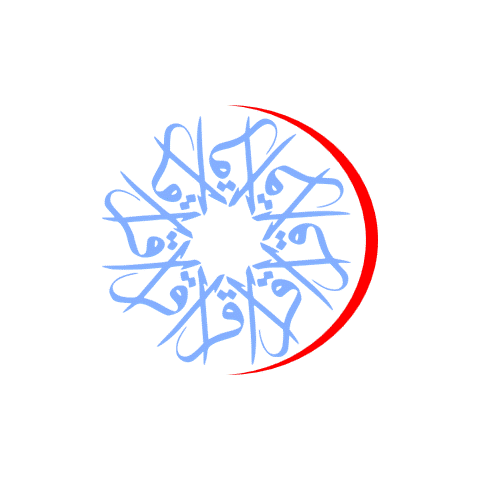الجزء الأول: مستويات التنظيم
تقدم الفصول من 1 إلى 4 للطلاب فهمًا أساسيًا لعلم التشريح وعلم وظائف الأعضاء البشري ، بما في ذلك لغته ومستويات التنظيم وأساسيات الكيمياء وبيولوجيا الخلية. توفر هذه الفصول أساسًا لمزيد من الدراسة عن الجسد. كما أنها تركز بشكل خاص على كيفية الحفاظ على التوازن في مناطق الجسم والمواد الكيميائية المهمة والخلايا.
الفصل 1 مقدمة لجسم الإنسان
الفصل 2 المستوى التنظيمي الكيميائي
الفصل 3 مستوى التنظيم الخلوي
الفصل 4 المستوى التنظيمي النسيجي – تحت الإعداد
الجزء الثاني: الدعم والحركة
في الفصول من 5 إلى 11 ، يستكشف الطلاب الجلد ، وهو أكبر عضو في الجسم ، ويفحصون أنظمة الجسم والهيكل العظمي والعضلي ، باتباع التسلسل التقليدي للموضوعات. هذ الجزء هو الأول الذي يوجه الطلاب عبر أنظمة معينة من الجسم ، وهو بذلك يحافظ على التركيز على الاستتباب وكذلك الأمراض والظروف التي يمكن أن تعطله.
الفصل 5 الجهاز اللحافي – تحت الإعداد
الفصل 6 النسيج العظمي والجهاز الهيكلي – تحت الإعداد
الفصل 7 الهيكل المحوري – تحت الإعداد
الفصل 8 الهيكل الطرفي – تحت الإعداد
الفصل 9 المفاصل – قريبا
الفصل 10 الأنسجة العضلية – قريبا
الفصل 11 الجهاز العضلي – قريبا
الجزء الثالث: التنظيم والتكامل والتحكم
تساعد الفصول من 12 إلى 17 الطلاب على الإجابة عن الأسئلة المتعلقة بالتحكم في الجهاز العصبي والغدد الصماء وتنظيمهما. على النقيض من التسلسل التقليدي للموضوعات ، تم دمج الحواس الخاصة في الفصل الخاص بالجهاز العصبي الجسدي. يقدم الفصل الخاص بالفحص العصبي للطلاب نهجًا فريدًا لفهم وظيفة الجهاز العصبي باستخدام خمسة اختبارات تشخيصية بسيطة ولكنها قوية.
الفصل 12 مقدمة في الجهاز العصبي – قريبا
الفصل 13 تشريح الجهاز العصبي – قريبا
الفصل 14 الجهاز العصبي الجسدي – قريبا
الفصل 15 الجهاز العصبي اللاإرادي – قريبا
الفصل 16 الفحص العصبي – قريبا
الفصل 17 جهاز الغدد الصماء – قريبا
الجزء الرابع: السوائل والنقل
في الفصول 18-21 ، يدرس الطلاب وسائل النقل الرئيسية للمواد اللازمة لدعم جسم الإنسان وتنظيم بيئته الداخلية وتوفير الحماية.
الفصل 18 الدم – قريبا
الفصل 19 الجهاز القلبي الوعائي: القلب – قريبا
الفصل 20 الجهاز القلبي الوعائي: أوعية الدم والدورة الدموية – قريبا
الفصل 21 الجهاز الليمفاوي والمناعة – قريبا
الجزء الخامس: الطاقة والصيانة والتبادل البيئي
في الفصول من 22 إلى 26 ، يكتشف الطلاب التفاعل بين أنظمة الجسم والبيئة الخارجية من أجل تبادل المواد ، والتقاط الطاقة ، وإطلاق النفايات ، والصيانة الشاملة للأنظمة الداخلية التي تنظم التبادل. تركز التفسيرات والرسوم التوضيحية بشكل خاص على كيفية ارتباط الهيكل بالوظيفة.
الفصل 22 الجهاز التنفسي – قريبا
الفصل 23 الجهاز الهضمي – قريبا
الفصل 24 التغذية والتمثيل الغذائي – قريبا
الفصل 25 الجهاز البولي – قريبا
الفصل 26 السوائل ، والكهارل ، والتوازن الحمضي القاعدي – قريبا
الجزء السادس: التطور البشري واستمرارية الحياة
تدرس الفصول الختامية الجهاز التناسلي الذكري والأنثوي ، وتصف عملية التطور البشري ومراحل الحمل المختلفة ، وتنتهي بمراجعة آليات الوراثة.
الفصل 27 الجهاز التناسلي – قريبا
الفصل 28 التنمية والوراثة الجينية – قريبا
Unit 1: Levels of Organization
Chapters 1–4 provide students with a basic understanding of human anatomy and physiology, including its language, the levels of organization, and the basics of chemistry and cell biology. These chapters provide a foundation for the further study of the body. They also focus particularly on how the body’s regions, important chemicals, and cells maintain homeostasis.
Chapter 1 An Introduction to the Human Body
Chapter 2 The Chemical Level of Organization
Chapter 3 The Cellular Level of Organization
Chapter 4 The tissue Level of Organization
Unit 2: Support and Movement
In Chapters 5–11, students explore the skin, the largest organ of the body, and examine the body’s skeletal and muscular systems, following a traditional sequence of topics. This unit is the first to walk students through specific systems of the body, and as it does so, it maintains a focus on homeostasis as well as those diseases and conditions that can disrupt it.
Chapter 5 The Integumentary System
Chapter 6 Bone and Skeletal Tissue
Chapter 7 The Axial Skeleton
Chapter 8 The Appendicular Skeleton
Chapter 9 Joints
Chapter 10 Muscle Tissue
Chapter 11 The Muscular System
Unit 3: Regulation, Integration, and Control
Chapters 12–17 help students answer questions about nervous and endocrine system control and regulation. In a break with the traditional sequence of topics, the special senses are integrated into the chapter on the somatic nervous system. The chapter on the neurological examination offers students a unique approach to understanding nervous system function using five simple but powerful diagnostic tests.
Chapter 12 Introduction to the Nervous System
Chapter 13 The Anatomy of the Nervous System
Chapter 14 The Somatic Nervous System
Chapter 15 The Autonomic Nervous System
Chapter 16 The Neurological Exam
Chapter 17 The Endocrine System
Unit 4: Fluids and Transport
In Chapters 18–21, students examine the principal means of transport for materials needed to support the human body, regulate its internal environment, and provide protection.
Chapter 18 Blood
Chapter 19 The Cardiovascular System: The Heart
Chapter 20 The Cardiovascular System: Blood Vessels and Circulation
Chapter 21 The Lymphatic System and Immunity
Unit 5: Energy, Maintenance, and Environmental Exchange
In Chapters 22–26, students discover the interaction between body systems and the outside environment for the exchange of materials, the capture of energy, the release of waste, and the overall maintenance of the internal systems that regulate the exchange. The explanations and illustrations are particularly focused on how structure relates to function.
Chapter 22 The Respiratory System
Chapter 23 The Digestive System
Chapter 24 Nutrition and metabolism
Chapter 25 The Urinary System
Chapter 26 Fluid, Electrolyte, and acid–Base Balance
Unit 6: Human development and the Continuity of Life
The closing chapters examine the male and female reproductive systems, describe the process of human development and the different stages of pregnancy, and end with a review of the mechanisms of inheritance.
Chapter 27 The Reproductive System
Chapter 28 Development and Genetic Inheritance
 جاري التحميل
جاري التحميل
